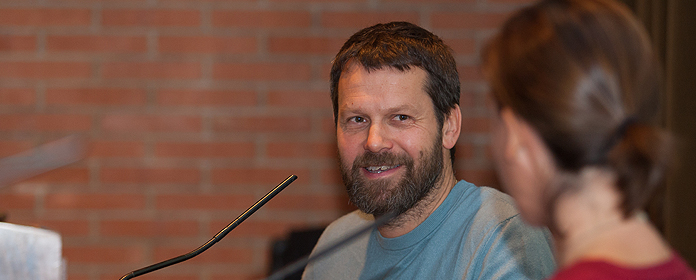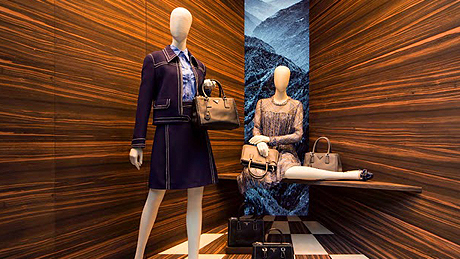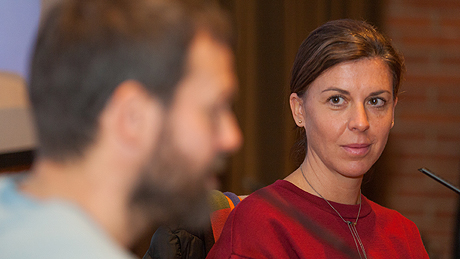A conversation about design and its need to reinvent itself.
Domitilla Dardi, from the MAXXI in Rome, and designer Martino Gamper, in the School of Architecture

The curator of the MAXXI Museum Domitilla Dardi and designer Martino Gamper reflect at the School of Architecture of the University of Navarra on design and its need to reinvent itself.
They met professionally at the Roman Museum, where he exhibited Transformer, a sample that changes the value of objects through their shape. A year later, they talked at the School about some of the designer's most outstanding works.
Domitilla Dardi: Martino Gamper graduated in Vienna and did a Master's Degree at the Royal College of Art in London under the direction of a leading designer, Ron Arad. He has shown that in this discipline there are times when there is a division between the work craftsmanship and production. I think it's interesting for students to know what the beginning of your work was like.
Martino Gamper: It is exciting to participate in the first year of Degree at design and also to show you how I got to where I am. At design you have to reinvent yourself at every project. You have to understand what you want to do, because design is not just one thing in the world.
D: When you can't find a professional style to express yourself, you have to try to find out what is important to you.
M: For one of my projects I collected objects from the street. I found things that I mixed and they worked. I made a hundred chairs this way. One chair a day.
D: Why did you start on this challenge? I think performance is important in this project. I imagine that you have ever had to design work that you were not satisfied with.
M: Right. In this one, for example, every day I had to design a chair and come up with a new idea. It didn't always work.
D: You were designing by doing.
M: I transfer the design to paper, but I need to project it to the natural to see if it works. It's much easier for me to take it to internship.
D: This is interesting. Being bilingual, you don't need to go around translating, maybe the same thing happens with the elements. You tend to transfer the idea to something physical, maybe because it's not a translation, but a transformation.
M: Yes. A lot of companies ask me to show them the latest stuff I've done, but I ask them what they need, what their needs are, the purposes... It's like writing a song or a book. There is no perfect chair, because it depends on the status. Every day attention of mixing different parts, scattering their parts to recreate.

▲ One of the Prada window displays in Milan, designed by Martino Gamper.
Fashion frenzyMartino Gamper: You have to play a lot with the composition of the environment. The design is the one that has to adapt to the space and not the other way around. I proved this, for example, with the Prada window display in Milan. Through my composition, I tried to give depth to the window using only wood.
Domitilla Dardi: As an artistic effect.
M: Yes, but with this project I understood the frenetic pace to which the design has to be subjected to adapt to the needs of fashion. It is exhausting.
D: As you said, it's another rhythm. Fashion is very interesting and offers diverse opportunities. In fact, it is striking how much fashion has to contribute to design. Sometimes both disciplines can go at the same pace, but at other times a more leisurely process has to be respected at design.

▲ Table with mixed wood, by Martino Gamper.
Wood tells storiesMartino Gamper: This wood came from the old colonies, it could be 67 years old, which makes it an extraordinary material. I discover these things when I travel to different places.
Domitilla Dardi: So, let's say that each wood tells a different story and together they find meaning.
M: Exactly. Therefore, in my designs I seek to enhance and bring out what each wood conveys.
The design, mirror of the soulM: Sometimes designs represent the state of mind of their author, as if you create by and for yourself. Even that work can identify you without the need to sign it.
D: True. I have seen collections that described a psychological portrait. It's strange, because sometimes I didn't know what the author was like but through his works I saw reflected a very intimate vision of his thinking.
M: We each design life in our own way. We have our words, thoughts, views, beliefs and feelings. The same is true for design as a profession.





